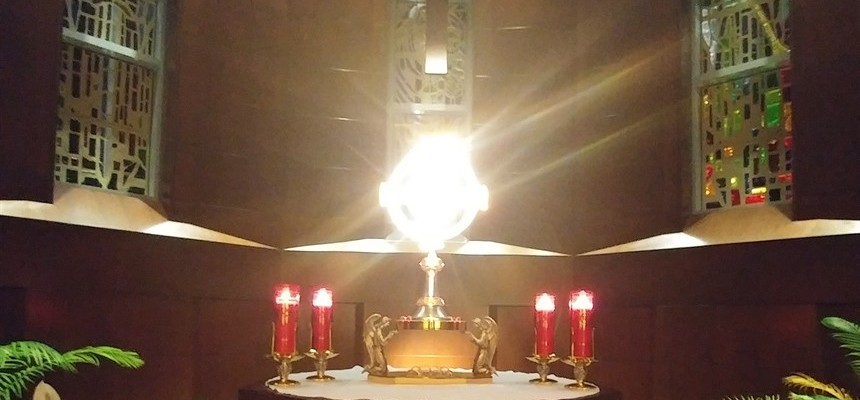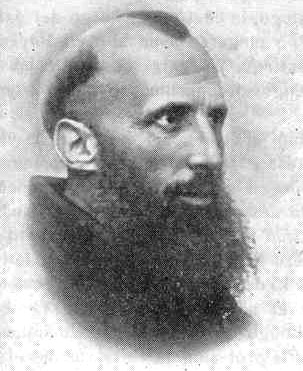Loneliness in America—A Growing and Deadly Epidemic spurred on by the Covid-19 Pandemic; where is God in all of this?
By Larry Peterson
I have learned that loneliness has no boundaries. It stretches out its tentacles and wraps them around those who may have lost a spouse, a child, a parent, a sibling, or even a dear friend. I have been widowed twice and know full well how loneliness can create a desolate place in the widowed equation.
Loneliness holds no prejudice. It randomly chooses those it has decided to torment, and once it does, it attacks mercilessly. Its victims include people from every conceivable walk of life, especially the unsuspecting. Many times the dull ring of the phone or a knock at the door is all it takes to hurl someone into the pit of loneliness. It can attack anyone at any time, and it has become a social condition of almost epidemic proportions.
Incredibly, during early March of 2020, loneliness was gifted with a new victim to feast on: it extended its ravenous appetite into the pandemic known as COVID-19, aka the coronavirus. Loneliness and the pandemic joined forces with “experts” and began to ravage thousands upon thousands of people with loneliness, especially senior citizens. One way was to take away their chairs and sofas. Let me explain.
I have been bringing Holy Communion to the homebound on Sundays for over twenty years. It may be the most uplifting thing I do, and I know I have been spiritually rewarded many times over. It was early March when I confronted a new wrinkle among my visits. I visit one lady, Virginia (she is 98), who resides in an apartment which is part of a single-person, independent living facility. It is a reasonably long walk from the parking lot to the building entrance. Once there, you use a keypad to gain access. I scroll to Virginia’s name and get her on the speaker. She buzzes me in.
As the sliding doors open, I stop short. No one is there. Every Sunday, there are four or five, maybe six, people in the lobby sitting around chatting and just visiting with each other. They know my name, and I always get a friendly welcome from them. We exchange a few pleasantries (I usually joke about something), and then I go on my way.
But this Sunday, the lobby was empty. I just stood there because it took me a few seconds to realize that the furniture was gone. There was no sofa, or chairs, or coffee table. Management had decided that “protecting” the residents against COVID-19 was of prime concern. So they had the furniture removed. That simple decision changed the lives of the half dozen people I knew in ways management could not have imagined. It also changed the lives of many others, of whom I was not aware. Management’s action was successful; with no place to sit, the tenants remained in their small apartments—ALONE.
The situation impacted me deeply. I have been visiting the sick and homebound for a long time, and they do not ask for much. However, in their low profile, quiet world, they look forward to sitting together (if possible) and just talking about whatever it is they talk about. My visit is a big deal for them. I see each of my folks from maybe ten minutes up to thirty minutes, depending upon how much “chatting” is needed. I may be the only visitor they see all week. Yet my visit buoys them up for my next visit, which is a week away. The folks that gather in the lobby every week are non-Catholic and do not receive Communion. But I do get to say a short prayer with them, and they like my doing it. So do I.
But on this Sunday morning in March of the year 2020, things changed in a way no one could have ever imagined. The powers that be decided we should be isolated from each other. They want us to avoid each other, not touch each other, and become individual entities. But we are social beings, and like it or not, we need each other. We need to touch and hold and shake hands and hug, especially among family and friends. Mandated loneliness could prove to be, in some cases, more deadly than the actual virus.
The headline for this piece used the word epidemic in referring to loneliness. The COVID-19 pandemic has highlighted the loneliness factor, not just in America, but around the world. Cigna referenced a “Loneliness Index,” which shows how loneliness is an actual epidemic in the United States. This worldwide health service company used the UCLA Loneliness Scale (yes, there is a loneliness scale) in a questionnaire used to determine a person’s social isolation and their subjective feelings. What follows is from their report of May 1, 2018.
- 47 percent of Americans sometimes or always feel alone
- 27 percent of Americans feel no one understands them
- 40 percent think that their relationships have no meaning and feel isolated
- 20 percent feel they feel close to no one and have no one to talk to
- AMAZINGLY–Generation Z (18 to 22) is the loneliest generation. How scary is that?
- Social media users have a 43.5 percent loneliness factor, which was comparable to the 41.7 percent for those who do not use social media.
If we think about the actual numbers, these percentages refer to it is mind-boggling. In a nation of almost 330,000,000 people, 20 percent is 66.000,000 of us. When we say 47 percent, we are almost at 150,000,000 people. How can close to half the population of the United States of America, feel alone? How can 66,000,000 people feel close to no one or have no one to talk to? And all of this is prior to the COVID-19 pandemic and its forced isolation.
Over the past 25 years, there has been a 58-percent drop in attendance at club meetings, a 43-percent drop in family dinners, and a 35-percent drop in having friends over. Children have regulated playtime while deprived of social development. We reach in our pockets and pull out electronic devices that allow us to instantly reach each other day or night anywhere in the world, but how many of us are talking to each other? This behavior is fertilizing the seeds of future loneliness.
Is our primary mode of communication now email? How many young people can even write a letter or address an envelope? Job applicants interview over the phone or Skype; couples break up via text message. Families are also having birthday parties for a loved one on ZOOM. Is this a GOOD thing? Where is the hugging, the handshaking, the cheek kissing, the eye contact? We need that–it is who we are. Are we teaching the younger generation how to be lonely? How many families are holding hands as they thank God for the food they are about to eat, together, as a family?
Loneliness is brought upon us by things we have no control over, such as death, injury, accidents, and natural disasters. This, we understand, because this makes sense. Why are so many, especially among the young, feeling so alone with no one to turn to? This must count as one of the saddest commentaries of our era. This does NOT make sense.
The remedy may be right in our face, but the secular world will never factor it in. You see, nowhere is the name of God mentioned in these findings. In fact, nowhere is the importance of the God-based, family even considered.
Regarding our faith, often called the One, True Faith, we have this incredible gift of The Holy Eucharist. Our core teaching is that Transubstantiation occurs when the priest says the words of consecration over the bread and wine during the celebration of Holy Mass. The bread and wine become the Body and Blood of Christ Himself. It is NOT symbolic. Yet 70% of professed Catholics reject this dogma. This leads back to the loneliness factor.
We have this beautiful tradition of having Eucharistic Adoration. Christ, truly present in the consecrated Host, is placed in a monstrance and put on the altar. We believers can come and visit with Him, sit with Him, talk to Him, even simply just look at Him. On First Fridays, we have all-night Adoration at my parish, which ends with 8 a.m. Mass on Saturday morning.
During the night, there will be those of us who will come and sit with the Christ present in the Eucharist, and just “hang out” with Him. For you lonely Catholics who do not believe, you are missing so much. You do not need to be alone. Jesus is there for you–and for all of us–all the time. If you are feeling lonely, why not call your local parish and ask them when they have Adoration. Then go over and sit with Jesus. You will not be alone.
Getting back to God and family would be akin to putting the lynchpin back into the hub of life. Then, people, kids included, might be taught that they can turn to Jesus and think of His words from Matthew 28:20 And behold, I am with you always, until the end of this age.
Interestingly, the first three words of the Bible are “In the beginning …”. Could the Bible or an app for the Bible be the beginning for someone to believe that they are NEVER alone?
“Loneliness and the feeling of being unwanted
is the most terrible poverty.”
St. Teresa of Calcutta
Copyright © Larry Peterson 2020



